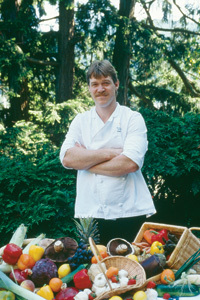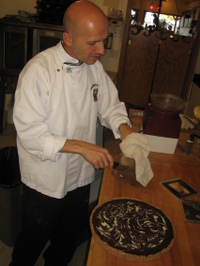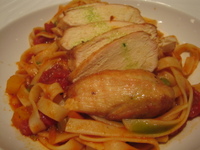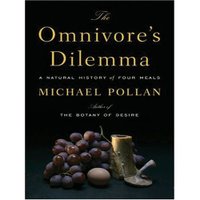 Last Saturday morning I was the keynote speaker at THESA 2006, a conference of the Teachers of Home Economics Specialist Association, with delegates attending from all over British Columbia, and I met at least one delegate from the Yukon as well. One of the books I talked about that teachers were quite interested in is The Omnivore’s Dilemma, by Michael Pollan. It’s a fascinating look at where our food comes from and the choices we can make when it comes to feeding ourselves and our families. Clicking here will take you to Amazon.ca where you can purchase the book and save 34 percent off the list price and help keep this website running!
Last Saturday morning I was the keynote speaker at THESA 2006, a conference of the Teachers of Home Economics Specialist Association, with delegates attending from all over British Columbia, and I met at least one delegate from the Yukon as well. One of the books I talked about that teachers were quite interested in is The Omnivore’s Dilemma, by Michael Pollan. It’s a fascinating look at where our food comes from and the choices we can make when it comes to feeding ourselves and our families. Clicking here will take you to Amazon.ca where you can purchase the book and save 34 percent off the list price and help keep this website running!
 There were some questions about the ‘Local Heroes’ I featured during my talk, such as Hilary Abbott, of Hilary’s Cheese. You can find most of these farms by checking out the Southern Vancouver Island Direct Farm Marketing Association website. But I’m also posting the text of a story I wrote for EAT Magazine in 2004 about my favourite things in the Cowichan Valley. Hope you enjoy it…
There were some questions about the ‘Local Heroes’ I featured during my talk, such as Hilary Abbott, of Hilary’s Cheese. You can find most of these farms by checking out the Southern Vancouver Island Direct Farm Marketing Association website. But I’m also posting the text of a story I wrote for EAT Magazine in 2004 about my favourite things in the Cowichan Valley. Hope you enjoy it…
How Green Is My Valley? By Don Genova
I think it was the asparagus, so fresh and crisp I ate it raw out of the bag as my car rattled down the gravel driveway of the farm. Or maybe it was the roast chicken that actually tasted like chicken, bones of which made a stock so redolent of fowl I had to stick my nose right over the pot and inhale in great lungfuls of aromatic steam. Then again, it might have been the cheese, addictive, fresh, white curds squeaking between my teeth as I gobbled them down. After tasting samples of these three Cowichan Valley standout foods, I was hooked. I take my food seriously, and when I discovered a place in the world where I could live just minutes away from the aforementioned gustatory delights, real estate ads offering acres of land and large houses started to look pretty good, especially compared to the dingy two-bedroom house I was renting in Vancouver.
After a short search, I bought a house in Cobble Hill, and since arriving in March of 2003, I’ve discovered more and more places to satisfy my palate, making me realize the Cowichan Valley is a special place to live, and loaded with world class potential.
A typical Saturday may go something like this: 9am finds me at the Downtown Duncan Farmers Market, where I pick up long, thin Japanese cucumbers with maximum crunch at the Gamboa Greenhouses stall. Then over to the Mad Dog Crabs stall to select a live crab to boil that evening. Scott and Katie will try to get me to buy a large piece of octopus that came up with the crab trap, but I defer until I find a good recipe for ‘thick arm of octopus’. Hilary Abbott of Hilary’s Cheese will have a bag of fresh cheese curds, and if his booth is busy, I grab him a coffee from the café across the street, for which he is most appreciative, needing a bit of a kick-start on early mornings. I may rub elbows with food guru James Barber, who moved to the Cowichan Valley himself a year before I did, and coined the phrase, ‘the Provence of Canada’ for the valley, or compare notes with chef and cookbook author Bill Jones, another transplanted Vancouverite who succumbed to the allure of the Cowichan a few years ago. It’s always fun to kibitz with Ken Stefanson of Gabriola Gourmet Garlic at his booth and pick up a jar of his garlic chutney I use as a shortcut for many recipes calling for chopped garlic. After a wander through the other stalls, it’s off to the Pharmasave to pick up a Saturday Globe and Mail. (although I have high-speed internet and satellite TV, apparently it’s impossible to deliver the Globe to my front door)
After the market I make a quick stop at the Cowichan Valley Meat Market for excellent strips of home-smoked, thick-sliced bacon and whatever beef, lamb, or pork products I’m craving for dinner. This butcher shop is owned and operated by the Quist family, who operates a ranch in the North Cowichan and raise their animals as naturally as possible. Not far from the butcher shop is The Old Farm Market, where I grab good quality, reasonably-priced produce I haven’t been able to score at the farmers market. If it’s the season, I then roar off down the highway to Chuck Ford’s Asparagus Farm, making sure I get there before he sells out for the day, buying enough tender spears to leave some for actual cooking that evening instead of eating it all raw. At Cowichan Bay Farm I pick up a couple of chickens for my freezer (my mom says you should always have at least one chicken in the freezer), and a couple of duck breasts to keep on hand for those ‘instant gourmet’ evenings that amaze and delight visiting friends. Two more stops: Hilary’s wife Patty is usually holding down the farm at the Cheese Shoppe at their farm on Cherry Point Road, where I catch up with her and get my free range eggs produced by her ‘girls’, and any cheeses Hilary didn’t have at the market. Last stop; ease down the big hill into the little seaside gem of Cowichan Bay and True Grain Bread. This bakery opened in mid-April and is the saviour to all bread connoisseurs, Atkins be damned. Jonathan Knight is the young baker who moved here to pursue his dream of producing artisan and organic breads made the old-fashioned way, no preservatives, dough conditioners or anything artificial, long fermentations and risings, with texture and flavour to die for. My favourite for daily use is his 9-grain multigrain, and for snacking or sandwiches nothing beats the chewy ciabatta. I could also live on a daily diet of his pain au chocolat. A pastry chef is now working out of the bakery, and while I haven’t sampled the full range, what I’ve tasted so far has left me swooning. Jonathan tells me the response to the bakery has been overwhelming, and it’s been exciting and exhausting at the same time. He calls himself a ‘morning baker’, since he starts at 4am every morning, and often enjoys the sun rising over Saltspring Island with a cool breeze off the ocean water that not only cools the bakery, but wafts the aromas of his products out to the gathering masses as they salivate over the counter. John, the guy at the counter, always has a smile of welcome when you walk in the front door.
So, if I never want to go to a restaurant again, I have my meat, poultry, eggs, crab, cheese and bread, all purchased directly from the producers. Ah, but I do like to eat out on occasion, and contrary to popular belief about food journalists, money is an object, and I’ve discovered some friendly, reasonably-priced venues in the Cowichan Valley that have become my favourites. My list starts just as you come into Mill Bay from the south off the Malahat with Mill Bay Fish and Chips. Lightly battered halibut, always moist on the inside and crispy on the outside, a generous side of properly cooked French fries, and a Caesar salad that delights in its simplicity and smacks your tongue with a proper dose of garlic. For muffins, cookies, the New York Times, a carefully-made latte and an interesting variety of roasts for my espresso machine, I stop in at Black Coffee and Other Delights at Whippletree Junction.
In downtown Duncan, where you have to get off the highway to discover the eateries that are not fast-food chains, I have two ‘joints’ where I feel welcome and well-fed. The Arbutus Café is a downtown institution, holding its own at the same location on Kenneth Street since 193_. (I have to check on this) The whimsical artistic décor consists of eclectic pieces of art collected by the owner on his travels, as well as his own efforts, and sets the Arbutus above other diners of its ilk. The leather-topped stools at the counter and the big stainless steel milk are right out of the 1960’s, and the Reuben sandwich I had there recently was superb. Hot, piled with corned beef, sauerkraut and cheese, a real chin-dribbler, burgers are highly satisfying as well. On nearby Craig Street you will find Just Jake’s. Now a Duncan institution, Just Jake’s was founded by Liz and Lance Steward in 1991, when, as Liz says, they absolutely felt like they were jumping off the deep end, but with nothing to lose, lots of confidence, and some good recipes. They quickly discovered that Duncan is a ‘meat and potatoes’ kind of clientele, so they don’t stray far from that formula. I like Just Jake’s because of the friendly staff, solid pub food, and comfy atmosphere. I know I’m going to like it even more in January of next year, when the Stewards hope to cut the ribbon on a brewpub they’re building next door. It will be Duncan’s first brewpub, and I’m guessing it will bring in a more sophisticated crowd and allow the kitchen to get a little more adventurous with local ingredients and ethnic efforts.
If you’re up for a Sunday drive, head east out of Duncan towards Maple Bay, and take the Genoa Bay turnoff. After a picturesque, twisty bit of road, at the very end you are rewarded with the Genoa Bay Café. It sits right on the water, with a view of the marina and tree-covered hills, and at low tide you can sit on the patio and watch crabs scurry across the bottom of the bay. They also make a mean club sandwich, and pies loaded with seasonal fruit. Head to the marina shop, and you can buy a whole pie that was made by the chef at the Café for a measly 10 bucks. If pie is not your cup of tea, meander your way back to Cowichan Bay and pull in at The Udder Guy’s Ice Cream Company. Lots of great flavours, I’m partial to the pistachio, and my favourite part? They put a jelly bean at the bottom of the cone before they add your ice cream. That way you always get a treat when you finish your treat!
There you have it. This is my Cowichan Valley, so far. My only regret is that my job tears me away from the Valley far too often and I haven’t done as much exploring and tasting as I’ve wanted to…but perhaps stretching out the experience will make it that much more delicious.
 If you are looking for the Pacific Palate Most Memorable Meal Contest, click here. This morning on the show, I talked about the Vancouver restaurants that made it to the top ten best new restaurants in Canada as named by En Route magazine. By Wednesday, November 1st, the full En Route food issue should be posted to their website and you can check out all the details there. In the meantime, here are the Vancouver restaurants you need to know about:
If you are looking for the Pacific Palate Most Memorable Meal Contest, click here. This morning on the show, I talked about the Vancouver restaurants that made it to the top ten best new restaurants in Canada as named by En Route magazine. By Wednesday, November 1st, the full En Route food issue should be posted to their website and you can check out all the details there. In the meantime, here are the Vancouver restaurants you need to know about:
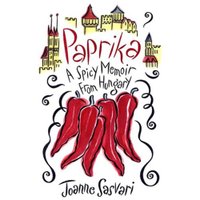
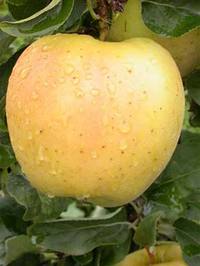

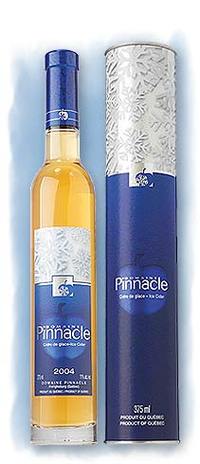
 Last Saturday morning I was the keynote speaker at THESA 2006, a conference of the Teachers of Home Economics Specialist Association, with delegates attending from all over British Columbia, and I met at least one delegate from the Yukon as well. One of the books I talked about that teachers were quite interested in is The Omnivore’s Dilemma, by Michael Pollan. It’s a fascinating look at where our food comes from and the choices we can make when it comes to feeding ourselves and our families. Clicking
Last Saturday morning I was the keynote speaker at THESA 2006, a conference of the Teachers of Home Economics Specialist Association, with delegates attending from all over British Columbia, and I met at least one delegate from the Yukon as well. One of the books I talked about that teachers were quite interested in is The Omnivore’s Dilemma, by Michael Pollan. It’s a fascinating look at where our food comes from and the choices we can make when it comes to feeding ourselves and our families. Clicking 

